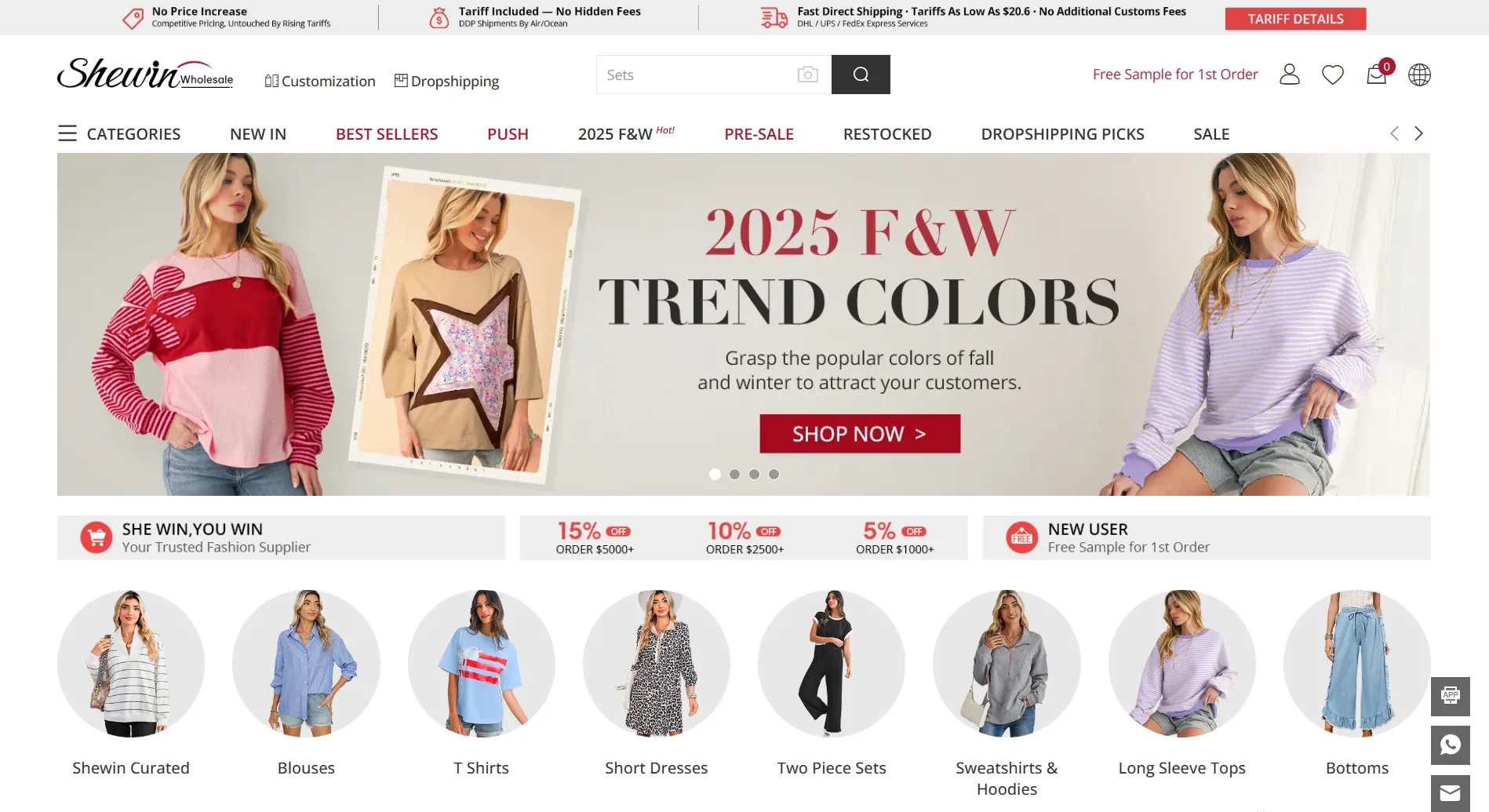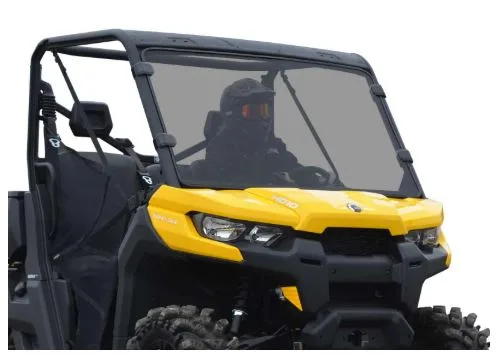Clothing Wholesale: Where to Buy and How to Promote
The fashion industry in 2025 is thriving with opportunity, especially for those who understand the power of buying and selling clothing wholesale. Whether you’re an online retailer, boutique owner, or aspiring entrepreneur, sourcing clothing at wholesale prices allows you to build a profitable business with better margins, trend adaptability, and scalable growth potential.
However, it takes more than just picking a few suppliers and uploading products to a website. A successful wholesale strategy requires insight into which products perform best, where to source them, and how to promote them in a crowded marketplace effectively.
The article shows how to buy wholesale clothing and market your business strategically in today’s competitive environment.
Why Wholesale Clothing
Before learning what to sell and how to sell, let’s check why wholesale clothing is a good business idea.
1. Stronger Profit Margins
Wholesale purchasing allows you to buy products at a significantly reduced price, often 50% to 70% below retail. These cost savings empower you to set competitive pricing while retaining healthy profit margins.
2. Better Control Over Inventory
By sourcing clothing in bulk, you reduce the risk of supply delays and stock shortages. This enables you to offer consistent product availability to customers and take advantage of seasonality in fashion.
3. Flexible Branding Opportunities
Many suppliers now offer private-label and white-label solutions, allowing you to customize garments with your tags, packaging, and even logos. This is ideal for building a distinct brand in the saturated fashion space.
Which Products to Wholesale
Now, you know why wholesale clothing, let’s check the products you can choose to sell in 2025.
1. Long-Sleeved Tops
A staple for every season, long-sleeved tops offer comfort and versatility. They’re ideal for layering, appealing to minimalist buyers and trend-conscious shoppers alike. These pieces work well in casual, business-casual, and streetwear niches, making them a safe and lucrative wholesale choice.
2. Hoodies & Sweatshirts
The rise of comfort-first fashion has made Hoodies & Sweatshirts a wardrobe essential. Oversized silhouettes, gender-neutral fits, and athleisure aesthetics dominate this category. It’s particularly popular among Gen Z consumers and TikTok-savvy fashion brands.
3. Affordable Cardigans for Women
Layering items like cardigans offers year-round appeal. Wholesalers offering affordable cardigans for women give boutique owners the flexibility to provide lightweight options for spring or thick knits for fall and winter. Cardigans pair easily with dresses, denim, or loungewear, which is why they’re frequently purchased as outfit builders.
4. Plus Size Fashion
Inclusion is no longer optional—it’s essential. Offering size-inclusive collections that go beyond XL can help retailers tap into a loyal customer base often underserved by mainstream fashion.
5. Matching Sets and Two-Piece Outfits
Coordinated sets continue to trend thanks to their convenience and Instagram-friendly appeal. Look for knitwear sets, sweatsuit duos, and skirt-top combinations when curating your wholesale offering.
Where to Buy Clothing in Bulk
There are hundreds of wholesale platforms, but few combine quality, affordability, and trend relevancy. Here are some of the most reliable options in 2025.
1. Shewin – Best for Boutique Fashion Retailers
Shewin has quickly established itself as a premier destination for boutique-quality wholesale fashion. With a wide variety of modern, trend-savvy styles, this supplier is particularly well-suited for women’s fashion retailers looking to scale their inventory without sacrificing quality.
Why Choose Shewin?
- No high minimum order quantities
- Vast range of products including Hoodies & Sweatshirts, dresses, cardigans, blouses, and more
- Weekly new arrivals to keep up with fast-changing trends
- Excellent shipping and fulfillment service, especially for U.S.-based retailers
Shewin also offers versatile layering staples like affordable cardigans for women, which work across age groups and style preferences. Their collections reflect current color palettes, textures, and silhouettes that resonate with both classic and contemporary shoppers.
2. FashionGo – Vendor Aggregation at Scale
FashionGo is one of the largest U.S.-based B2B wholesale fashion platforms, connecting buyers with multiple vendors in one centralized location. While quality can vary from vendor to vendor, the site provides filtering tools and buyer reviews to assist in decision-making.
3. Faire – Ideal for Independent Labels
Faire caters to indie retailers looking for curated, boutique-style collections. It also offers generous return policies, 60-day payment terms, and exposure to up-and-coming designers. Though the price point may be higher, the unique inventory makes it ideal for niche businesses.
4. Alibaba – Best for Private Label and High Volume
For retailers interested in launching their own brand or manufacturing custom clothing, Alibaba offers access to thousands of suppliers worldwide. It’s best suited for large-volume purchases, and proper sampling is a must to ensure quality consistency.
How to Promote Your Wholesale Business
Finding quality inventory is just the beginning. The next challenge is building visibility and creating demand. In 2025, marketing your wholesale clothing brand requires a multi-channel approach, combining content, community, and commerce.
1. Build a Brand, Not Just a Store
Brand identity is critical. Invest in a cohesive logo, tone of voice, and visual style across your website, packaging, and social media. Storytelling should highlight your niche, values (e.g., sustainability, inclusivity), and what makes your collections unique.
2. Leverage Social Media Strategically
Instagram, TikTok, and Pinterest remain essential platforms for fashion brands.
You can share product photos that feature models of diverse sizes and styles to showcase inclusivity and help customers visualize how the clothing fits different body types.
And, you can create engaging reels or TikToks that highlight outfit inspiration, styling tips, or unboxing experiences to build excitement around your products.
Additionally, collaborate with micro-influencers to generate authentic content and strengthen your brand’s reach within targeted communities.
3. Optimize Your Online Store
Your e-commerce site must be fast, mobile-friendly, and visually engaging.
Product pages should include multiple high-quality images that show the clothing from various angles, clear sizing charts to help customers choose the right fit, and detailed material breakdowns to inform them about fabric content and care instructions.
Style suggestions (e.g., “Pair with our affordable cardigans for women for a layered look”)
Include filters for size, color, and price to improve customer navigation.
4. Use Email Marketing to Drive Repeat Sales
Collect emails through pop-ups, discounts, and gated content like style guides.
Then, segment your email list based on customer behavior or preferences, and send targeted campaigns such as announcements for new arrivals, seasonal promotions, personalized style tips, and limited-time bundle offers to drive engagement and repeat purchases.
Automation tools like Klaviyo and Mailchimp help streamline these campaigns and boost ROI.
5. Run Targeted Ads
Platforms like Meta (Facebook/Instagram) and Google Ads allow for precise targeting by age, gender, shopping behavior, and interest. Start with remarketing ads to people who visited your store but didn’t buy.
Include visuals of bestsellers, such as Hoodies & Sweatshirts or matching sets, and strong calls-to-action like “Shop Now,” “Limited Stock,” or “Free Shipping.”
Final Thoughts
The path to success in wholesale clothing starts with strategic sourcing and smart marketing. By identifying high-demand product categories, you can build a strong, trend-conscious inventory that resonates with modern consumers.
Platforms like Shewin provide a one-stop solution for retailers looking to combine quality, variety, and affordability in their bulk orders. But don’t stop at product selection. Build a memorable brand, nurture your audience with content and promotions, and keep optimizing every step of the buying journey.
Wholesale clothing isn’t just a business model. It’s a growth engine. And with the right approach, 2025 could be your most successful year yet.





